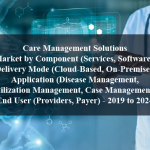OVERVIEW
The Endoscopy Equipment Market is currently valued at USD 32.2 billion in 2024 and will be growing at a CAGR of 7.4% over the forecast period to reach an estimated USD 46.2 billion in revenue in 2029. he endoscopy equipment market is a dynamic sector within the broader medical devices industry, characterized by constant innovation and technological advancements. Endoscopy involves the use of specialized instruments equipped with miniature cameras and lights to visualize the interior of organs or cavities within the body, typically through natural openings or small incisions. These procedures enable clinicians to diagnose and treat a wide range of medical conditions with greater precision and minimal invasiveness compared to traditional surgical methods. Key components of endoscopy equipment include flexible or rigid endoscopes, camera systems, light sources, video processors, and specialized accessories such as forceps, biopsy instruments, and guidewires. Recent years have witnessed significant advancements in endoscopic imaging technologies, including high-definition (HD) and ultra-high-definition (UHD) cameras, as well as three-dimensional (3D) visualization systems, enhancing the clarity and detail of images captured during procedures.
The increasing prevalence of gastrointestinal diseases, cancers, and chronic conditions necessitating endoscopic interventions contributes significantly to market growth. Secondly, there’s a growing preference for minimally invasive procedures among patients and healthcare providers due to quicker recovery times and reduced post-operative complications. Thirdly, the expanding applications of endoscopy across various medical specialties like gastroenterology, urology, pulmonology, and gynecology fuel market expansion. Lastly, technological advancements such as high-definition and ultra-high-definition imaging, as well as 3D visualization systems, enhance the clarity and precision of endoscopic procedures, further driving market growth.
Table of Content
Market Dynamics
Drivers:
The increasing prevalence of gastrointestinal diseases, cancers, and chronic conditions necessitating endoscopic interventions contributes significantly to market growth. Secondly, there’s a growing preference for minimally invasive procedures among patients and healthcare providers due to quicker recovery times and reduced post-operative complications. Thirdly, the expanding applications of endoscopy across various medical specialties like gastroenterology, urology, pulmonology, and gynecology fuel market expansion. Lastly, technological advancements such as high-definition and ultra-high-definition imaging, as well as 3D visualization systems, enhance the clarity and precision of endoscopic procedures, further driving market growth.
Key Offerings:
In the dynamic realm of endoscopy equipment, a plethora of innovative offerings revolutionize medical procedures. At its core are endoscopes, available in flexible and rigid forms, providing clinicians unparalleled access and visualization within the body. Integral to this setup are cutting-edge camera systems, boasting high-definition and even ultra-high-definition capabilities, capturing intricate details crucial for accurate diagnoses and treatments. Complementing these are advanced light sources, illuminating internal structures with precision and clarity. Additionally, sophisticated video processors enhance real-time visualization, while a diverse array of accessories—from biopsy forceps to guidewires—empower clinicians to perform intricate maneuvers with finesse. Three-dimensional visualization systems further augment surgical precision, offering depth perception in minimally invasive procedures.
Restraints :
Although endoscopic equipment has advanced significantly, there are still a number of obstacles and limitations preventing its broad use and efficacy. The high expense of purchasing and maintaining cutting-edge endoscopic equipment is one major barrier. Healthcare institutions may face financial difficulties due to the initial equipment purchase cost as well as continuing maintenance, repair, and upgrade costs, especially in environments with limited resources. Another significant obstacle is the learning curve involved in becoming proficient in endoscopic treatments. Not all healthcare practitioners may have access to the specialised training and skills needed to perform minimally invasive procedures. The lack of qualified personnel may hinder the use of endoscopy and lead to unequal access to high-tech medical care. Moreover, endoscopic equipment development, licencing, and commercialization are made more complex by regulatory obstacles and compliance requirements. Strict approval procedures and regulatory requirements may impede innovation and reduce the availability of state-of-the-art health care solutions by delaying the release of new technologies. Furthermore, there are a number of important limitations on the usage of endoscopic equipment due to concerns about infection control and patient safety. Strict attention to stringent sterilisation and disinfection measures is required throughout endoscopic treatments because to the risks posed by contamination and cross-infection to patients and healthcare personnel. Infections linked to healthcare can result from improper hygiene maintenance, which can also negatively impact patient outcomes.
Regional Information:
• In North America, characterized by a robust healthcare infrastructure and high healthcare expenditure, endoscopy equipment enjoys widespread adoption, driven by a growing prevalence of gastrointestinal diseases and cancers. Moreover, strategic alliances between healthcare providers and technology companies foster innovation and market expansion.
• Europe boasts a diverse landscape marked by varying healthcare systems and regulatory frameworks across countries. While technologically advanced markets like Germany and the UK drive innovation and adoption, economic disparities in Eastern Europe may hinder market growth. In the Asia-Pacific region, rapid economic development, coupled with an aging population and increasing healthcare spending, fuels market growth.
• Countries like China and Japan lead in technological innovation and market penetration, supported by government initiatives to improve healthcare infrastructure. However, challenges such as regulatory complexities and the presence of counterfeit products in emerging markets pose obstacles to market growth.
Recent Developments:
• In November 2023, Olympus Corporation launched the EVIS X1, an advanced endoscopy system in the existing product portfolio of the company..
• In September 2023, Stryker launched, 1788, a minimally invasive surgical camera, offering more vibrant image with balanced lighting.
Key Players:
Olympus Corporation, Medtronic plc, Karl Storz GmbH & Co. KG, Fujifilm Holdings Corporation, Boston Scientific Corporation, Stryker Corporation, Ethicon Inc. (a subsidiary of Johnson & Johnson), Richard Wolf GmbH, Smith & Nephew plc, and Pentax Medical (a division of Hoya Corporation).
1) What is the projected market value of the Endoscopy Equipment Market?
– The Endoscopy Equipment Market is expected to reach an estimated value of USD 46.2 billion in revenue by 2029.
2) What is the estimated CAGR of the Endoscopy Equipment Market over the 2024 to 2029 forecast period?
– The CAGR is estimated to be 7.4% for the Endoscopy Equipment Market over the 2024 to 2029.
3) Who are the key players in the Endoscopy Equipment Market?
– Olympus Corporation, Medtronic plc, Karl Storz GmbH & Co. KG, Fujifilm Holdings Corporation, Boston Scientific Corporation, Stryker Corporation, Ethicon Inc. (a subsidiary of Johnson & Johnson), Richard Wolf GmbH, Smith & Nephew plc, and Pentax Medical (a division of Hoya Corporation).
4) What are the drivers for the Endoscopy Equipment Market?
– The market for endoscopic interventions is growing due to the increasing prevalence of gastrointestinal diseases, preference for minimally invasive procedures, expanding applications across medical specialties, and technological advancements like high-definition imaging and 3D visualization systems.
5) What are the restraints and challenges in the Endoscopy Equipment Market?
– Endoscopy equipment has made significant advancements, but challenges remain. The high cost of acquiring and maintaining technology, the learning curve for specialized procedures, regulatory challenges, and concerns about patient safety and infection control are major restraints. These factors can hinder healthcare facilities’ ability to adopt advanced medical care, limit access to advanced treatments, and hinder innovation. Additionally, strict adherence to sterilization and disinfection protocols can lead to healthcare-associated infections and compromised patient outcomes.
6) What are the key applications and offerings of the Endoscopy Equipment Market?
– Endoscopy equipment revolutionizes medical procedures with advanced camera systems, light sources, video processors, and accessories. It provides clinicians with high-definition, ultra-high-definition images, enabling accurate diagnoses and treatments. Three-dimensional visualization systems enhance surgical precision, enabling minimally invasive procedures and enhancing surgical precision.
7) Which region is expected to drive the market for the forecast period?
– North America is expected to have the highest market growth from 2024 to 2029
Why Choose Us?
Insights into Market Trends: Global Market Studies reports provide valuable insights into market trends, including market size, segmentation, growth drivers, and market dynamics. This information helps clients make strategic decisions, such as product development, market positioning, and marketing strategies.
Competitor Analysis: Our reports provide detailed information about competitors, including their market share, product offerings, pricing, and competitive strategies. This data can be used to inform competitive strategies and to identify opportunities for growth and expansion.
Industry Forecasts: Our reports provide industry forecasts, which will inform your business strategies, such as investment decisions, production planning, and workforce planning. These forecasts can help you to prepare for future trends and to take advantage of growth opportunities.
Access to Industry Experts: Our solutions include contributions from industry experts, including analysts, consultants, and subject matter experts. This access to expert insights can be valuable for you to understand the market.
Time and Cost Savings: Our team at Global Market Studies can save you time and reduce the cost of conducting market research by providing comprehensive and up-to-date information in a single report, avoiding the need for additional market research efforts.












